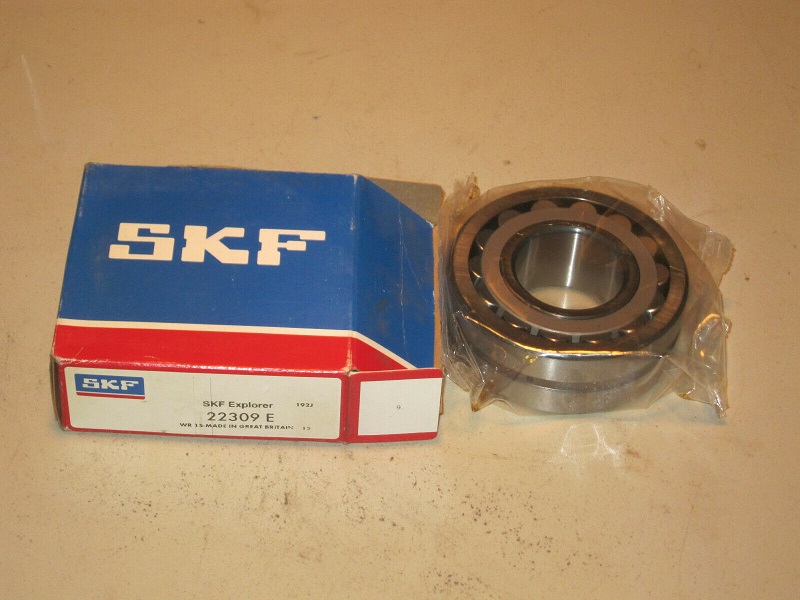
 News
News1.Bearings are classified according to the load direction or nominal contact angle they can withstand:
Nominal contact angle—refers to the angle between the normal line of the contact point of the steel ball and the inner ring and outer ring channel and the vertical plane of the axis line under the normal working condition of the bearing is called the nominal contact angle.
(1) Radial bearings are classified according to different nominal contact angles
Radial bearings-Rolling bearings mainly used for bearing radial loads, with a nominal contact angle ranging from 0 to 45°. According to the nominal contact angle, it can be divided into:
①Radial contact bearing-radial bearing with a nominal contact angle of 0;
②Angular contact radial bearings—bearings with a nominal contact angle greater than 0° to 45. (2) Thrust bearings are classified according to different nominal contact angles
Thrust bearings-Rolling bearings mainly used for bearing axial loads. The nominal contact angle is greater than 45 to 90. According to the difference in nominal contact angle, it can be divided into:
① Axial contact bearing-thrust bearing with a nominal contact angle of 90°;
②Angular contact thrust bearings-thrust bearings with a nominal contact angle greater than 45° but less than 90°.
(2) Thrust bearings are classified according to different nominal contact angles
Thrust bearings-Rolling bearings mainly used for bearing axial loads, with a nominal contact angle greater than 45° to 90. According to the different nominal contact angles, it can be divided into:
①Axial contact bearing-thrust bearing with a nominal contact angle of 90°;
②Angular contact thrust bearing—thrust bearing whose nominal contact angle is greater than 45 but less than 90°.
2. Bearings are classified according to different types of rolling elements
(1) Ball bearing
Ball bearing-the rolling elements are balls.
(2) Roller bearings
Roller bearings-the rolling elements are rollers.
Roller bearings can be divided into different types of rollers:
①Cylindrical roller bearing—The rolling element is a cylindrical roller bearing;
②Needle roller bearing-the rolling element is a needle roller bearing;
③Tapered roller bearing—The rolling element is a tapered roller bearing;
④Spherical roller bearings-the rolling elements are spherical roller bearings.
3. Bearings are classified according to whether they can be adjusted
Bearings can be divided into the following types according to whether they can be adjusted.
(1) Self-aligning bearing
Self-aligning bearing—The raceway is spherical, which can adapt to the angular deviation and angular movement between the axis of the two raceways.
(2) Self-aligning bearing (rigid bearing)
Self-aligning bearings (rigid bearings)-bearings that can resist the angular deviation of the axis between the raceways.
Click here for more details about SKF Bearing 22309E.

4. Bearings are classified according to the number of rows of rolling elements. Bearings can be classified into the following types according to the number of rows of rolling elements.
(1) Single row bearings
Single row bearings-bearings with one row of rolling elements.
(2) Double row bearings
Double-row bearings—bearings with two rows of rolling elements.
(3) Multi-row bearings
Multi-row bearings—bearings with more than two rows of rolling elements and bearing loads in the same direction, such as three-row and four-row bearings.
5. Bearings can be divided into the following types according to whether their parts can be separated.
(1) Separable bearing
Separable bearings-bearings with separable parts.
(2) Non-separable bearings
Non-separable bearing—After the bearing is finally matched, the ring can not be separated freely.
6.Bearings are classified according to their structure and shape
Bearings can be divided into multiple structural types according to their structural shapes (such as: with or without filling grooves, with or without inner and outer rings, and ring shapes, rib structure, and even with or without cages, etc.).
7. Bearings are classified according to their outer diameter size
Bearings are divided into:
① Miniature bearings-bearings with a nominal outer diameter range of 26mm or less;
②Small bearings-bearings with a nominal outer diameter range of 2855mm;
③Small and medium-sized bearings-bearings with a nominal outer diameter range of 60115mm;
④ Medium and large bearings-bearings with a nominal outer diameter range of 120190mm;
⑤Large bearings-bearings with a nominal outer diameter range of 200430mm;
⑥Extra-large bearings—bearings with a nominal outer diameter range of 440mm or more.